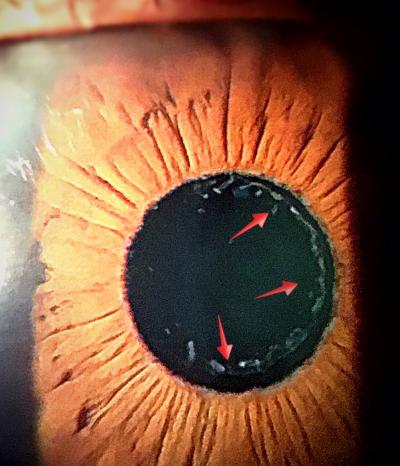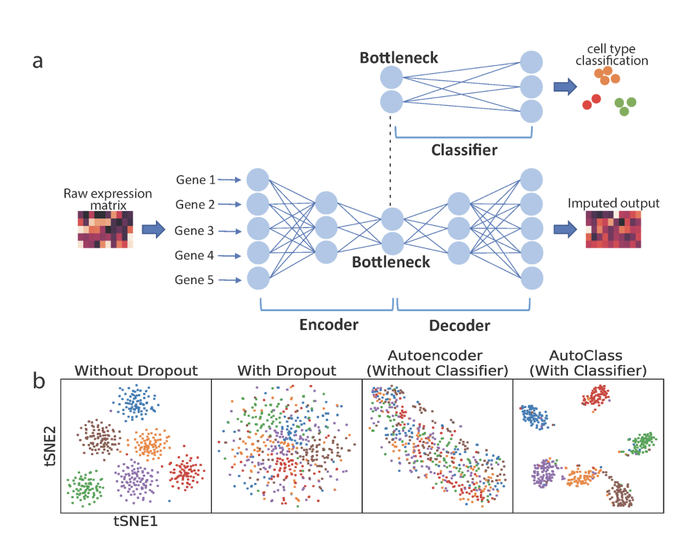The findings could pave the way for future research on the cause of exfoliation syndrome and potential cures

Credit: Agency for Science, Technology and Research (A*STAR)’s Genome Institute of Singapore,(GIS), Singapore Eye Research Institute (SERI)
SINGAPORE – A team of researchers from the Agency for Science, Technology and Research’s (A*STAR) Genome Institute of Singapore (GIS) and Bioprocessing Technology Institute (BTI), as well as Singapore Eye Research Institute (SERI), have identified a genetic mutation (functionally defective CYP39A1 gene) associated with exfoliation syndrome, the most common cause of glaucoma. The findings could pave the way for future research on the cause of exfoliation syndrome and potential cures. Their research was published in Journal of the American Medical Association (JAMA) on 24 February 2021.
Exfoliation syndrome is a systemic disorder characterised by abnormal protein material that progressively accumulates in the front of the eye. This disorder is the most common cause of glaucoma, and a major cause of irreversible blindness.
In this study, the scientists sequenced all protein encoding genes of more than 20,000 participants from 14 countries across Asia, Europe, and Africa, including more than 1,200 Singaporeans. They observed that people with exfoliation syndrome are twice as likely to carry damaging mutations in the gene encoding for the CYP39A1 protein, an enzyme which plays an important role in the processing of cholesterol. Further extended analyses suggest that defective CYP39A1 function is strongly associated with increased risk of exfoliation syndrome.
Although exfoliation syndrome is the most common cause of glaucoma, its origin is shrouded in mystery because it is not known where the abnormal protein deposits (exfoliative material) originate, and how the disease comes about. Answers to these questions could provide approaches to design and develop an effective treatment. The current findings point to the important role of cholesterol processing in the exfoliation syndrome disease process. As cholesterol is found abundantly in all cells, disruption to how cholesterol is processed due to defective CYP39A1 activity could adversely impact their normal functions. In particular, this study discovered that epithelial cells in the front of the eye responsible for filtering the blood supply to produce the clear fluid known as aqueous humour that bathes and nourishes other cells in the eye, were most affected by the CYP39A1 gene mutation. Disruption to the gene function can compromise the filtering function of epithelial cells and lead to leakage of exfoliative material from the blood into the eye.
Prof Patrick Tan, Executive Director of GIS, said, “This is a ground-breaking study that could facilitate future research efforts aimed at restoring defective CYP39A1 function and inhibiting the formation of exfoliation material in the eye as treatments for exfoliation syndrome and glaucoma.”
Prof Aung Tin, Director of SERI and Deputy Medical Director of SNEC, said, “This is a major eye disease, affecting over 70 million people worldwide, which causes a lot of visual morbidity and blindness, not only from glaucoma but also due to complications related to cataract surgery. This study was notable for involving many centres from many different countries around the world, but led from Singapore. The study findings are very exciting as we found a new pathway for the disease which opens up possibilities for new treatments.”
Prof David Friedman, the Albert and Diane Kaneb Chair in Ophthalmology at Harvard University and Director of the Glaucoma Service at the Massachusetts Eye and Ear Infirmary, Boston, commented, “Very exciting work. The researchers have identified rare gene variants that results in disrupted cholesterol homeostasis and transport that will open the door to novel therapeutics. Having studied over 20,000 individuals, the study demonstrates the power of studying rare variants to detect disease-causing genes in complex conditions.” Prof Friedman was not involved in the study.
###
About A*STAR’s Genome Institute of Singapore (GIS)
The Genome Institute of Singapore (GIS) is an institute of the Agency for Science, Technology and Research (A*STAR). It has a global vision that seeks to use genomic sciences to achieve extraordinary improvements in human health and public prosperity. Established in 2000 as a centre for genomic discovery, the GIS pursues the integration of technology, genetics and biology towards academic, economic and societal impact, with a mission to “read, reveal and write DNA for a better Singapore and world”.
Key research areas at the GIS include Precision Medicine & Population Genomics, Genome Informatics, Spatial & Single Cell Systems, Epigenetic & Epitranscriptomic Regulation, Genome Architecture & Design, and Sequencing Platforms. The genomics infrastructure at the GIS is also utilised to train new scientific talent, to function as a bridge for academic and industrial research, and to explore scientific questions of high impact.
For more information about GIS, please visit http://www.
About the Agency for Science, Technology and Research (A*STAR)
The Agency for Science, Technology and Research (A*STAR) is Singapore’s lead public sector agency that spearheads economic oriented research to advance scientific discovery and develop innovative technology. Through open innovation, we collaborate with our partners in both the public and private sectors to benefit society.
As a Science and Technology Organisation, A*STAR bridges the gap between academia and industry. Our research creates economic growth and jobs for Singapore, and enhances lives by contributing to societal benefits such as improving outcomes in healthcare, urban living, and sustainability.
We play a key role in nurturing and developing a diversity of talent and leaders in our Agency and research entities, the wider research community and industry. A*STAR’s R&D activities span biomedical sciences and physical sciences and engineering, with research entities primarily located in Biopolis and Fusionopolis.
For ongoing news, visit http://www.
About Singapore Eye Research Institute (SERI)
SERI is Singapore’s national research institute for ophthalmic and vision research. SERI has grown from a founding team of five in 1997 to a faculty of more than 250 staff, encompassing clinician scientists, scientists, research fellows, PhD students and support staff. SERI has also over 240 adjunct faculties from various eye departments, biomedical institutes and tertiary centres in Singapore. This makes SERI one of the largest research institutes in Singapore, as well as the largest eye research institute in the Asia Pacific region.
SERI’s mission is to conduct high-impact eye research that prevents blindness, low vision and major eye diseases common to Singaporeans and Asians. Over the last decade, SERI has conducted landmark research projects that have led to tangible outcomes, patient benefits, and success stories. It has paved the way for significant improvements in how eye diseases are treated and prevented, not just for Singaporeans or Asians, but on a global scale.
For more information about SERI, please visit http://www.
Media Contact
Claire Ng
[email protected]
Original Source
https:/
Related Journal Article
http://dx.





